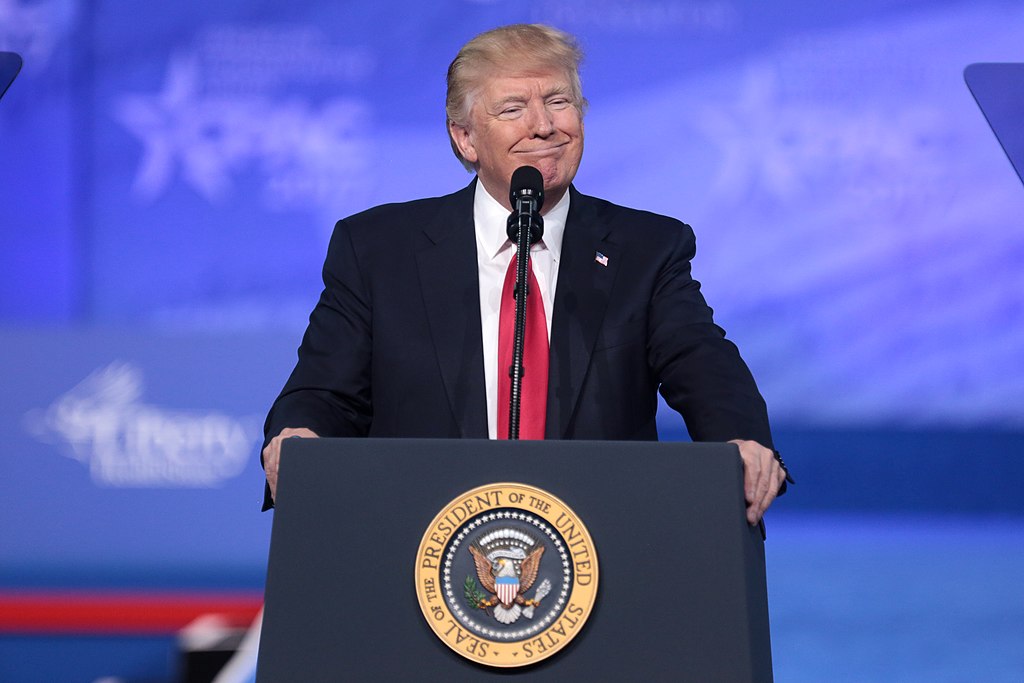As President Donald Trump begins his second term in 2025, his administration’s approach to minimum wage policy is drawing sharp criticism and praise from opposing sides. Trump has reiterated his belief that the federal government should not mandate a higher minimum wage, emphasizing the role of market dynamics and state autonomy in determining wage floors. This decision has reignited debates over economic inequality and the struggles faced by low-income workers.
During his first term, Trump rejected proposals to increase the federal minimum wage from $7.25 an hour, a figure unchanged since 2009. His administration argued that wage increases should be left to individual states, citing varied economic conditions and costs of living across the country. In 2025, the same stance remains central to his administration's economic policy.
Supporters Call for State Flexibility, Critics Cite Rising Costs
Supporters of Trump’s stance argue that a uniform federal minimum wage increase could harm small businesses, especially in rural areas where operating costs are lower. They believe that state and local governments are better positioned to decide appropriate wage levels for their populations. Proponents also claim that artificially inflating wages could lead to job cuts, increased automation, and higher consumer prices.
Critics, however, paint a starkly different picture. Labor unions and workers' rights advocates have highlighted the increasing cost of living and the struggles of low-wage earners. They argue that a higher federal minimum wage is necessary to address economic inequality and improve the standard of living for millions of Americans.
Shannon Riley, a policy analyst at the Economic Justice Institute, said, “The reality is that $7.25 is no longer a livable wage anywhere in the country. States alone cannot fix this issue.”
Netizens have also weighed in, with mixed reactions online:
- @FairWage2025: “$7.25 is not a livable wage. People are struggling while billionaires get richer. #RaiseTheWage”
- @FreeMarketRules: “Wages should reflect market demand, not government mandates. Trump's decision is the right one for businesses. #Trump2025”
- @JusticeForWorkers: “Leaving wage increases to the states is a cop-out. Workers deserve better. #LivingWageNow”
- @SmallBizOwner23: “A federal hike would crush my business. State-level decisions make more sense. #SupportSmallBusiness”
- @WorkingClassHero: “How are families supposed to survive on $7.25? This policy shows a lack of compassion.”
- @TrumpFan2025: “Trump is protecting jobs by rejecting unrealistic wage hikes. States should have the power to decide. #TrumpEconomy”
Economic Implications of Wage Stagnation
Economists remain divided on Trump’s approach. Opponents warn that stagnant wages will exacerbate income inequality and push more families into poverty. Meanwhile, advocates for a decentralized approach say the policy will prevent job losses and keep small businesses afloat.
Reports from the U.S. Department of Labor reveal that 20 states still adhere to the federal minimum wage, leaving millions of workers earning $7.25 per hour. Critics argue that without federal intervention, these workers will continue to fall behind as inflation erodes their purchasing power.
As debates continue, the political fallout from Trump’s decision on the minimum wage is likely to influence discussions on broader economic policy and income inequality in 2025.



 China Urged to Prioritize Economy Over Territorial Ambitions, Says Taiwan’s President Lai
China Urged to Prioritize Economy Over Territorial Ambitions, Says Taiwan’s President Lai  Honduras Election Turmoil Deepens as Nasralla Alleges Fraud in Tight Presidential Race
Honduras Election Turmoil Deepens as Nasralla Alleges Fraud in Tight Presidential Race  Maduro Confirms “Respectful” Call With Trump, Signals Openness to Diplomatic Dialogue
Maduro Confirms “Respectful” Call With Trump, Signals Openness to Diplomatic Dialogue  Trump Administration Halts Immigration, Green Card, and Citizenship Processing for 19 Countries
Trump Administration Halts Immigration, Green Card, and Citizenship Processing for 19 Countries  Drones Spotted Near Zelenskiy’s Flight Path in Ireland Trigger Security Alert
Drones Spotted Near Zelenskiy’s Flight Path in Ireland Trigger Security Alert  U.S.-Russia Talks Leave Ukraine Peace Efforts Uncertain
U.S.-Russia Talks Leave Ukraine Peace Efforts Uncertain  Pentagon Probe Finds Hegseth’s Use of Signal Risked Exposing Sensitive Yemen Strike Details
Pentagon Probe Finds Hegseth’s Use of Signal Risked Exposing Sensitive Yemen Strike Details  UN Chief Says Gaza Operation “Fundamentally Wrong” as Concerns Over War Crimes Grow
UN Chief Says Gaza Operation “Fundamentally Wrong” as Concerns Over War Crimes Grow  Michael Dell Pledges $6.25 Billion to Boost Children’s Investment Accounts Under Trump Initiative
Michael Dell Pledges $6.25 Billion to Boost Children’s Investment Accounts Under Trump Initiative  Trump and Lula Discuss Trade, Sanctions, and Security in “Productive” Phone Call
Trump and Lula Discuss Trade, Sanctions, and Security in “Productive” Phone Call  Australia and Japan Strengthen Defence Cooperation Amid Rising Regional Tensions
Australia and Japan Strengthen Defence Cooperation Amid Rising Regional Tensions  IMF Deputy Dan Katz Visits China as Key Economic Review Nears
IMF Deputy Dan Katz Visits China as Key Economic Review Nears  Taiwan Signals Openness to Renew Ties with Honduras as Election Unfolds
Taiwan Signals Openness to Renew Ties with Honduras as Election Unfolds  China’s Expanding Maritime Military Presence Alarms Taiwan and Japan
China’s Expanding Maritime Military Presence Alarms Taiwan and Japan  Israel Receives Body of Deceased Hostage as Rafah Crossing Reopening Hinges on Final Returns
Israel Receives Body of Deceased Hostage as Rafah Crossing Reopening Hinges on Final Returns  UN General Assembly Demands Russia Return Ukrainian Children Amid Ongoing Conflict
UN General Assembly Demands Russia Return Ukrainian Children Amid Ongoing Conflict  Trump Claims He Will Void Biden Documents Signed with Autopen
Trump Claims He Will Void Biden Documents Signed with Autopen 




























